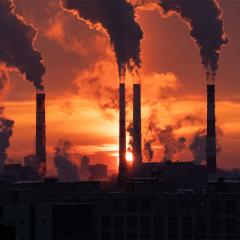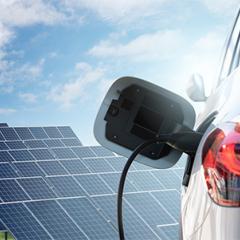 Public investment in electricity generation – a hot-button issue in Queensland?
Public investment in electricity generation – a hot-button issue in Queensland?
John Quiggin, The University of Queensland
One of the most striking features of the Queensland election campaign is that all major parties are advocating public investment in electricity generation.
The real choice to be made is whether this investment will promote the goal of a decarbonised energy system, or whether it will seek to delay this transition and prolong Australia’s reliance on coal-fired electricity.
Labor and the Greens are advocating public investment in renewables, while the LNP and One Nation want a new coal-fired power station.
Read more: Twitter analysis shows Queensland Labor has put Adani behind them
This choice, in turn, depends on attitudes to mainstream climate science. If the findings of mainstream science are accepted, a complete phase-out of coal-fired power, and its replacement by renewables, must take place over the next couple of decades. This implies a target of 50% renewables by around 2030.
The Queensland Renewable Energy Expert Panel modelled the achievement of a 50% renewables share for Queensland. The Expert Panel identified economic benefits of a renewable investment program including an average gain of 6,400 jobs.
Queensland has retained publicly owned electricity generators, primarily focused on coal-fired power. It would make sense for the public to diversify more into renewables.
Where the parties stand
At its recent conference, Labor committed to continued public ownership in the electricity sector and a 50% renewables target by 2030. The conference motion proposed a publicly owned energy corporation committed to protecting customers’ interests and building at least 1000 MW of clean energy.
The Greens propose more comprehensive public ownership with investment of $15 billion over the next 5 years to build publicly-owned clean energy and storage, estimated to create 5,500 jobs every year. The Labor-Green emphasis on renewables is consistent with the movement of the global mainstream.
Last week, at the UN Climate Conference in Bonn, 19 nations including the UK, New Zealand and Canada joined the Powering Past Coal Alliance, pledged to phase out coal-fired power altogether.
Read more: Bonn voyage: climate diplomats head into another round of talks
In sharp contrast, One Nation’s policy is based on the claim that climate change is a hoax, promoted by the United Nations as part of its sinister Agenda 21 policy, which, according to the One Nation platform, seeks to control you and your life .
This position is, at least, internally consistent. The willingness of conservative, liberal and labour governments around the world to sign up to a common climate change policy is seen by One Nation as evidence that the UN is making progress towards its goal of world domination.
The LNP takes a more ambivalent position. While backing coal and opposing renewables, its Queensland state conference narrowly rejected a motion calling on Australia to withdraw from its Paris commitments to reduce greenhouse gas emissions.
‘HELE’ of a big gamble
The key idea used to reconcile these contradiction is the idea that we can meet our commitments using “high efficiency, low emissions” (HELE) coal-fired power stations.
HELE power stations rely on the process of ultra-supercritical generation. That sounds impressive, but the reality is more prosaic. The term supercritical refers to the fact that at high temperatures and pressures, fluids are neither liquids (in this case, water) nor gases (steam) but display characteristics of both. Supercritical boilers are 10-20% more efficient than subcritical boilers.
Read more: Ultra, super, clean coal power? We’ve heard it before
The first supercritical boiler was invented in the 1920s. The technology was fully commercialised by the 1990s. Coal-fired power stations built in Queensland since 2000 operate on supercritical technology.
‘Ultra-supercritical’ plants, first installed around 2000, operate at even higher temperatures and pressures, but the additional increase in efficiency is limited, by the physics of the Carnot cycle, to between 10 and 15 per cent. The HELE acronym is misleading: emissions are lower than those of 20th century plants, but higher than any other generation technology.
So, the moment any substantial carbon price is imposed the proposed power plant will cease to be financially viable and will become a stranded asset. Investment in such a project is a bet that all the world’s scientists and every other government in the developed world have got things wrong or, alternatively, that Australia can go it alone on this issue.
It’s hard to see any financial institution taking a risk like this. Given the warnings already issued by regulators about the dangers of investing in stranded assets, a loan that goes bad will leave the lender open to litigation and regulatory sanctions. Will banks be willing to lend the necessary billion dollars or so on such collateral.
![]() Should the LNP gain office, then, their policy will face a critical test. Even with a substantial public investment, will any private firm be willing to take an equity stake in what looks certain to become a stranded asset? If not, will the Queensland public be forced to bear the entire risk?
Should the LNP gain office, then, their policy will face a critical test. Even with a substantial public investment, will any private firm be willing to take an equity stake in what looks certain to become a stranded asset? If not, will the Queensland public be forced to bear the entire risk?
John Quiggin, Professor, School of Economics, The University of Queensland
This article was originally published on The Conversation. Read the original article.



